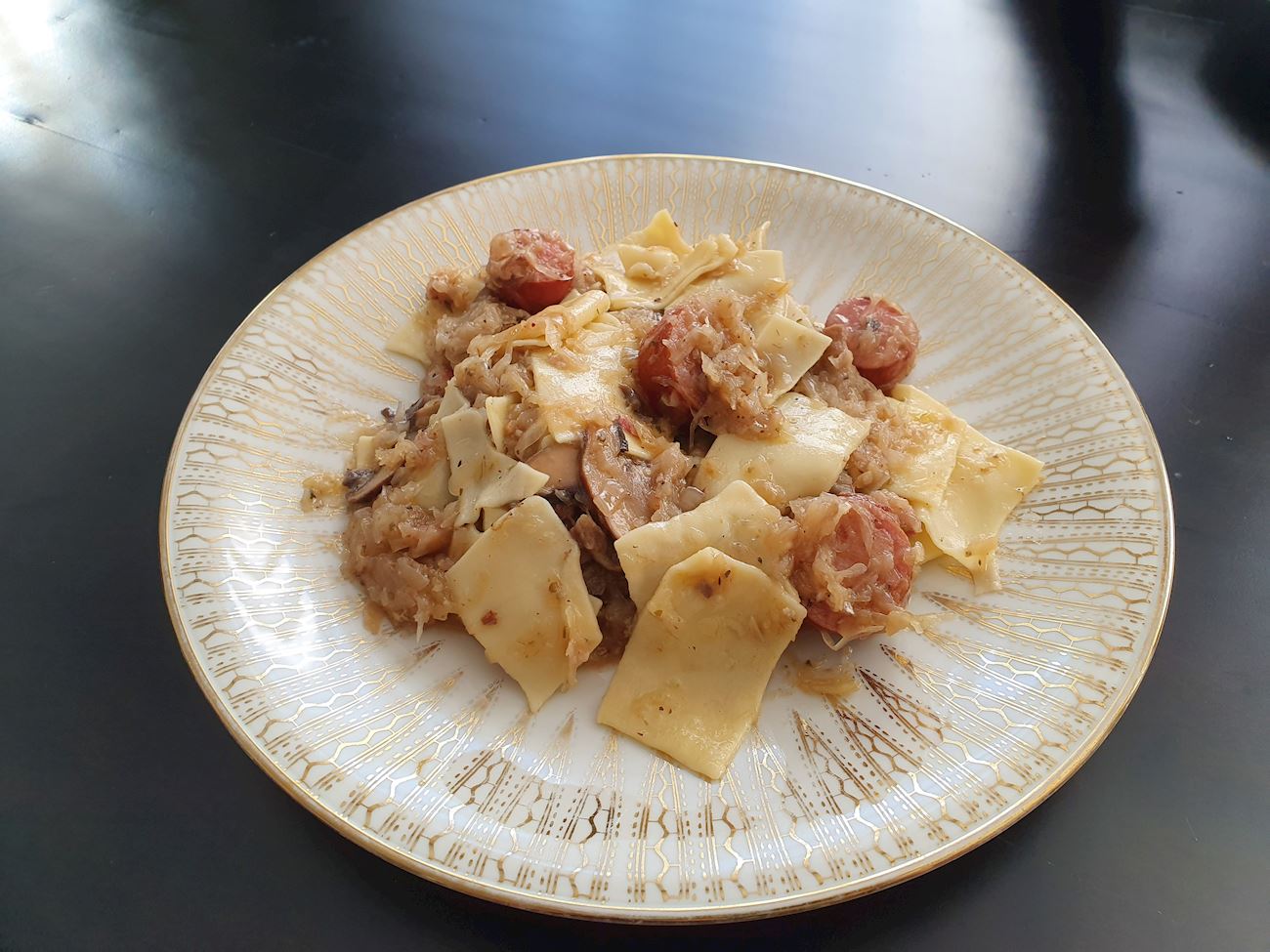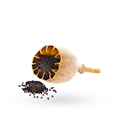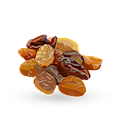MAIN INGREDIENTS
Kutia is a Ukrainian, Russian, Belarusian, and Polish sweet grain pudding that is traditionally served as part of a twelve-meal Christmas Eve supper. Interestingly enough, this festive treat is believed to have existed long before Christianity.
It is made with wheat, berries, honey or sugar, nuts, raisins, and poppy seeds. On Christmas Eve, before consuming the dish, a small bowl of kutia is traditionally placed outdoors as a bribe to Father Frost, then some of the kutia is tossed to the ceiling, and the number of grains that stick to the ceiling are used to predict next year's agricultural prosperity.
MAIN INGREDIENTS
Łazanki is the Polish and Belarusian name used for a variety of pasta and the eponymous dish, while in Lithuania the same dish is called skryliai. The pasta dough is made with wheat flour, eggs, water, salt, and oil. The flattened dough is shaped into squares or triangles, boiled, then combined with lard and onions, which are typically added on top of the pasta. Łazanki is mostly combined with meat and cabbage, in order to enhance the flavors and make it more substantial.
MAIN INGREDIENTS
Khaladnik is a cold beet soup that has been a staple of Belarusian cuisine since the late 18th century. It is made with boiled beets mixed with kefir, cucumbers, spring onions, and dill. The soup is traditionally served with a dollop of sour cream, a sprinkle of chopped dill, and often a hard-boiled egg on top.
This refreshing summer favorite has a distinctive pink color and a fresh, sour taste that is perfectly contrasted by a side of boiled potatoes.
TasteAtlas food rankings are based on the ratings of the TasteAtlas audience, with a series of mechanisms that recognize real users and that ignore bot, nationalist or local patriotic ratings, and give additional value to the ratings of users that the system recognizes as knowledgeable. For the “3 Worst Rated Belarusian Foods” list until March 20, 2025, 1,913 ratings were recorded, of which 1,200 were recognized by the system as legitimate. TasteAtlas Rankings should not be seen as the final global conclusion about food. Their purpose is to promote excellent local foods, instill pride in traditional dishes, and arouse curiosity about dishes you haven’t tried.







